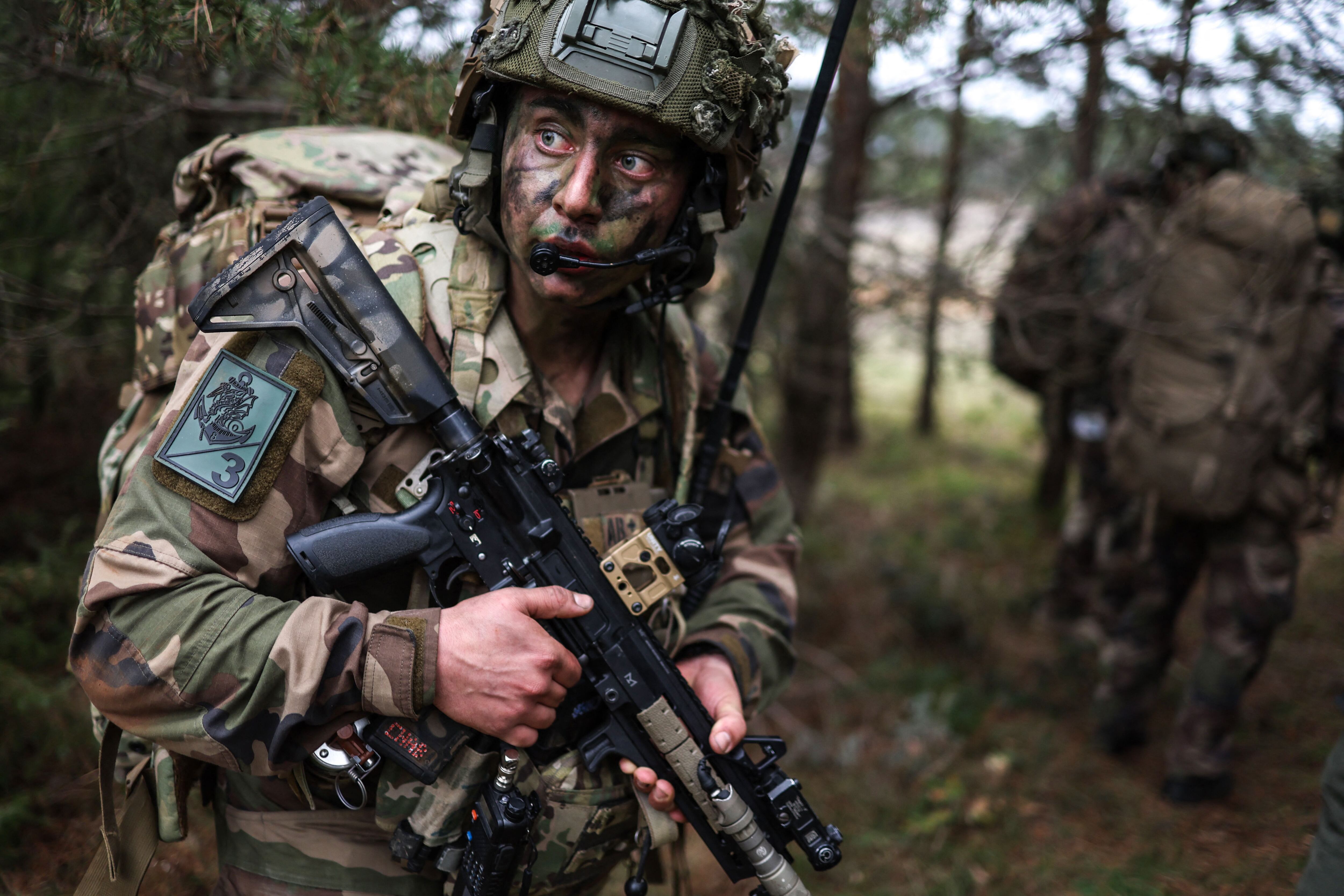STUTTGART, Germany — After several years without an exercise on its territory, the French military is preparing for the final phase of Orion 2023, a new drill focused on multidomain operations to prepare troops for a realistic warfighting scenario.
Orion integrates about 20 events that the services typically conduct separately, and involve multiple allies, including the United States. French Defense Chief of Staff Gen. Thierry Burkhard ordered the development of this exercise several years ago, Col. Pierre Gaudillière, spokesman for the French Chief of Defence Staff, said during an April 13 virtual press conference.
Based on a NATO-derived scenario, the exercise centers around a fictitious narrative to restore security in the state of “Arnland,” and it involves four distinct phases. Phase 1, held over the course of 2021 and 2022, was the planning phase, Gaudillière explained.
Phase 2, which ran from February to March 2023, involved a quick response deployment of 7,000 troops, led by France and reinforced with allies, which included capabilities and assets spanning all domains: land, sea, air, space, cyber, electromagnetic, and informational. This mission reflected a “first entry operation in a contested domain,” in which France’s aircraft carrier Charles de Gaulle was used to help set up an amphibious operation, alongside an air campaign involving all air assets, Gaudillière said.
Phase 3, which took place last month, consisted of an interagency tabletop exercise to reflect a “politico-military crisis management” scenario. Finally, Phase 4, which will begin next week and run through mid-May, will include simulated French and international units, up to division level, combined with units in the field, to represent a coalition deployment under UN and NATO mandate.
Orion’s final phase will involve 12,000 troops on the ground, including 1,700 troops from 14 allied nations, Gaudillière said. About 2,600 tactical vehicles, including 400 combat vehicles will be used, along with 60 aircraft – 50 of which are fighter jets – and 30 ships, including France’s aircraft carrier and two amphibious helicopter carriers. About 100 unmanned aerial systems of all sizes will also be involved, including two MQ-9 Reaper UAVs, and 20 space-borne sensors, per the ministry.
The exercise planners also built up a “dedicated universe” involving simulated networks, press rooms, and interactions with journalists, to ensure the exercise’s participants are in contact with the sort of stimuli they would typically get in such a conflict, but without “interference from the real world,” he noted.
While the general exercise scenario was not modified in the wake of Russia’s February 2022 invasion of Ukraine, planners included “stimuli” inspired by what France has observed on the Ukrainian battlefields and the conflict writ large, per Gaudillière.
Phase 4 will take place entirely on French national territory, in various counties and regions in the northeast and west of the country. Allied nations participating in Orion ‘23 include Belgium, the United Kingdom, the United States, Germany, Greece, and Spain, with some nations participating at the command level and others providing capabilities including helicopters and fighter jets, Gaudillière said.
French officials expect Orion to become a triennial exercise, with the next iteration to take place in 2026, following two years of planning, he added.
Vivienne Machi is a reporter based in Stuttgart, Germany, contributing to Defense News' European coverage. She previously reported for National Defense Magazine, Defense Daily, Via Satellite, Foreign Policy and the Dayton Daily News. She was named the Defence Media Awards' best young defense journalist in 2020.







